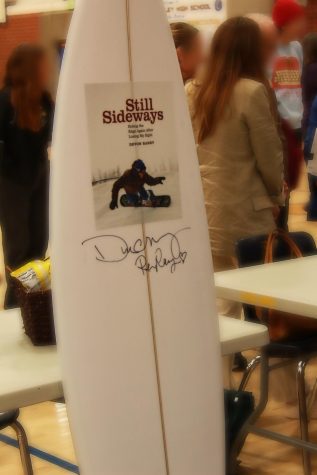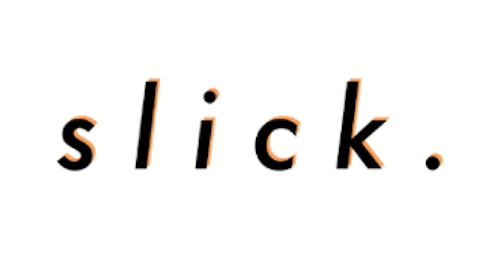“Still Sideways:” Insight on The Sightless World
April 28, 2023
Devon Raney flew down from Washington to give a speech about his book, “Still Sideways,” on March 10th to over five hundred highschool students for HB Reads—a reading program dedicated to inspiring students to read, think about, and discuss literature. Raney’s presentation was informational about his literary work, and it was also a charming look into his personal life and recent success.
Raney, with the podium backward to support his microphone and leaving his hands free to gesture as he talks, tells a crowd of teenagers and HBUHSD staff a bit about his life story and why he wrote “Still Sideways: Riding the Edge Again after Losing My Sight.” He was really passionate about his book being physical.
Raney said, “I didn’t want to see my story in a podcast or a magazine. I wanted to hand my book to my wife, and for her to hand it to my daughter.”
The book essentially is a physical piece of Devon Raney, as he dedicated five years to writing it with the help of his wife and neighbor’s daughter. Because of Raney’s surfing accident that triggered the genetic disorder, Leber, which affects the nerve behind the eye, he is left with 15% of his vision in his peripherals, causing him to have obstacles while writing that most authors would not have. Though he doesn’t read braille, he uses braille bumps on numbers and keypads to navigate writing his 320-page book. For reference, that’s about as thick as a VHS tape—another demonstration by Raney. He held his book up, and told his audience about a piece of technology that he felt was unknown to them.
When Raney listed his favorite books, he talked about their longevity. He admires books for their simplicity in form and function. The format of a book explains exactly what you’re supposed to do with it—you read it. The function is obvious in the way it’s presented. “Books have stayed with us since the beginning of time,” Raney said.
He feels the opposite way about cell phones. Raney uses a flip phone, and he talks a great deal about how much he doesn’t care for social media. He raised his phone to the crowd, making a joke about himself being in Star Trek as if flip phones had become completely obsolete to high schoolers. Not only is it less complex than a modern cell phone, but he can also utilize the braille bumps on the number pad.
When he started writing, it was a collection of memories about his childhood. While Raney highly praised books for being timeless and effortless, he also mentioned another childhood escape of his—sports. Time and time again Raney mentioned his love for snowboarding, surfing, and skateboarding. A day before the seminar in Fountain Valley, he was actually surfing the California coast.

Raney presents himself very pragmatically. He talked about his muse (his wife), his passions, and his perspective on life in very simple ways that were easy to digest—they don’t make you feel existential. Devon Raney described his book as a collaborative story between himself, the seeing world, and his collective passions. The book would not have been possible without a drive to create and a love for reading. Because Raney now listens to audiobooks due to his blindness, his book was actually released on hardback and audiobook simultaneously by his publisher—Patagonia.
Julie Hatano, a senior at Huntington Beach High who attended the HB Reads event, said, “Devon recounted how even though he lived with the struggles of his new condition, he still looked out for people in his life, and made sure they weren’t overwhelmed. He explained how he found a new reader for his writing process instead of asking his wife as he did before since he felt that she already bore too many responsibilities as the sole breadwinner of the family.”
Raney had obviously found his own way around his unique struggles and talked about this a lot during the presentation.
“There is a way in every single thing we do all the time to figure things out,” Raney said.
The best moment of the seminar was a more hands-on demonstration Raney gave towards the beginning. He asked the crowd to hold their fists over their eyes, noted how dark it is, and called attention to the movement we could see on the side. He tells everyone that is all he sees; his world is dark in front. The students participating in HBReads get their own perspective on what Raney sees so that the audience sheltered in the Fountain Valley gym on a rainy day can connect with his experience. It’s a heartwarming moment that tears away the layers of the seeing and sightless for just a few moments so we can learn about a great man, his work, and his personal accomplishments.

